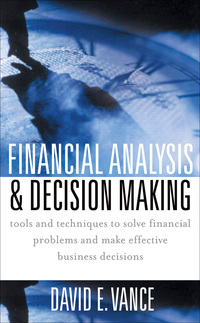Can anyone tell me if my answers are correct? When I search for the ratios online, I get several different results. Also, some sites say debt-to-assets ratio is simply calculated by taking total liabilities and dividing it by total assets, whereas I used a different method that seems like the correct way to do it, but I'm unsure. Additionally, according to some websites, debt-to-equity ratio is calculated by taking total liabilities and dividing it by total shareholders' equity. However, I did it differently too. Is my method correct? Total debt, which is in the numerator for both ratios, is current term debt + non-current term debt + commercial paper?
The data to calculate these ratios is taken from Apple's 2016, 2017, 2018, 2019, and 2020 10-K form as linked respectively below. Thank you in advance!

Current Liability: Commercial Paper Add: Current Term Debt Add: Non-Current Term Debt Total Debt Total Assets Debt-to-Asset Ratio Short-Term Debt + Long-Term Debt 2 Debt) Total Assets $ $ $ $ $ Apple Inc. 2016-2020: Debt-to-Asset Ratio & Debt-to-Equity-Ratio (USD) 2016 2017 2018 2019 2020 8,105,000,000.00 $ 11,977,000,000.00 $ 11,964,000,000.00 $ 5,980,000,000.00 $ 4,996,000,000.00 3,500,000,000.00 $ 6,496,000,000.00 $ 8,784,000,000.00 $ 10,260,000,000.00 $ 8,773,000,000.00 75,427,000,000.00 $ 97,207,000,000.00 $ 93,735,000,000.00 $ 91,807,000,000.00 $ 98,667,000,000.00 87,032,000,000.00 $ 115,680,000,000.00 $ 114,483,000,000.00 $ 108,047,000,000.00 $ 112,436,000,000.00 321,686,000,000.00 $ 375,319,000,000.00 $365,725,000,000.00 $ 338,516,000,000.00 $ 323,888,000,000.00 0.27 0.31 0.31 0.32 0.35 Current Liability: Commercial Paper Add: Current Term Debt Add: Non-Current Term Debt Total Debt Total Shareholders' Equity Debt-to-Equity Ratio Total Debt "Total Shareholders' Equity $ $ $ $ $ 8,105,000,000.00 $ 11,977,000,000.00 $ 11,964,000,000.00 $ 5,980,000,000.00 $ 4,996,000,000.00 3,500,000,000.00 $ 6,496,000,000.00 $ 8,784,000,000.00 $ 10,260,000,000.00 $ 8,773,000,000.00 75,427,000,000.00 $ 97,207,000,000.00 $ 93,735,000,000.00 $ 91,807,000,000.00 $ 98,667,000,000.00 87,032,000,000.00 $ 115,680,000,000.00 $ 114,483,000,000.00 $ 108,047,000,000.00 $ $ 112,436,000,000.00 128,249,000,000.00 $ 134,047,000,000.00 $ 107,147,000,000.00 $ 90,488,000,000.00 $ 65,339,000,000.00 0.68 0.86 1.07 1.19 1.72 The debt-to-asset ratio is a leverage ratio that shows how much debt a company has accumulated to finance its assets. All assets are included in the calculation, including intangibles, and the result can be used to determine how financially stable the company is. A higher ratio means there is a higher risk because more debt is allocated to acquiring assets. In 2020, Apple had a debt-to-asset ratio of 0.35, which is interpreted as 35% of its assets being financed by creditors and 65% financed by owners' (shareholders') equity. The debt-to-equity ratio is also a leverage ratio. It evaluates a company's financial leverage and measures how much of a company's operations are financed through debt instead of wholly-owned funds. In essence, it describes the degree to which shareholder equity can cover all outstanding debt if the business suddenly loses its revenue stream and the ability to pay down its debt. In general, if the ratio is below one, it is seen as relatively safe, whereas a ratio of two or higher signifies potential risk. Apple's 2016 debt-to-equity ratio of 0.68 meant that for every dollar in equity, Apple had $0.68 in leverage







